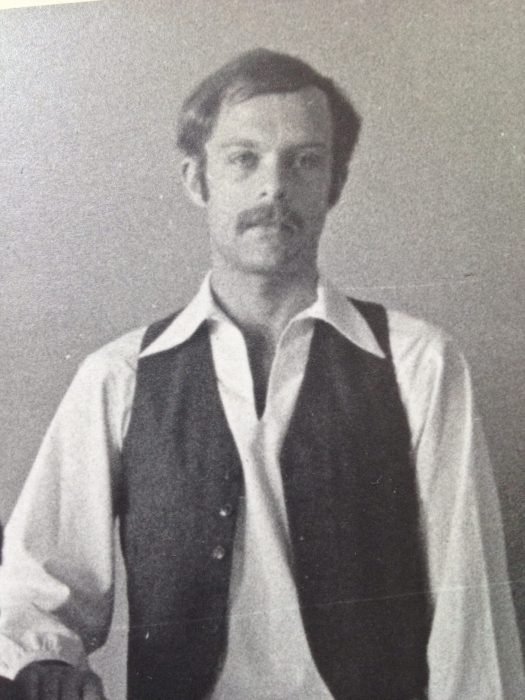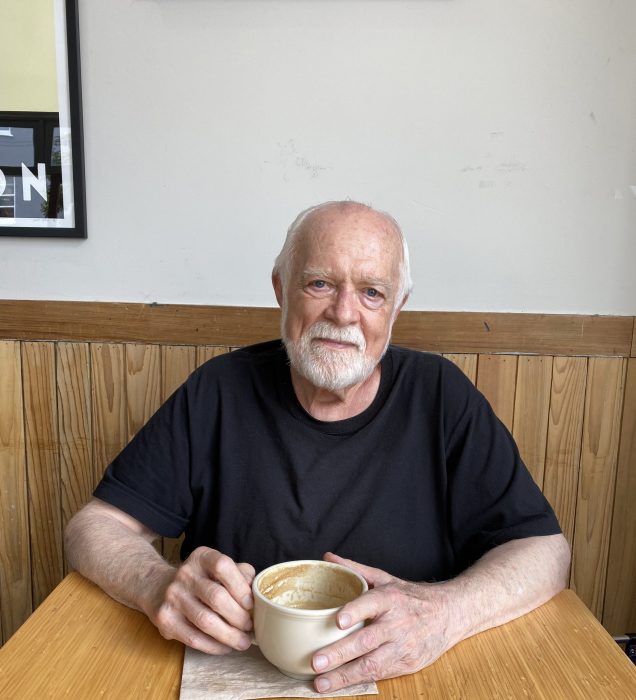Many ‘angels’ guided gay activist through life’s turmoils, and eventually, to executive roles in counseling and social responsibilty
When he was 15, Duff Axsom said, he met “one of the most important people in my life.” It was Genevieve Fiore, women’s rights and peace activist, and the founder of the Colorado Division of the United Nations Educational, Scientific, and Cultural Organization (UNESCO).
A member of one of the UNESCO Youth Clubs, he met young people from all over the world. “I realized what the term ‘community’ meant,” he said, and decided he wanted to serve his country by becoming an officer in the Foreign Service.
But during an internship after his junior year in college, in 1962, those aspirations fell apart. He was working in Wash., D.C., with Sargent Shriver’s Peace Corps, which placed 220,000 volunteers in more than 140 countries. And he was just acknowledging he was gay.
At the same time, he was learning the State Department was not receptive to people like him. From 1950 onward, Sen. Joseph McCarthy was rooting homosexuals out of the government with the rationale that they were subject to blackmail by the Soviets. “I discovered years later that there had been many gays in the Foreign Service at the time I wanted to join,” Axsom said, “but I was afraid I would be found out.”
Still, he got to meet President Kennedy and Sen. Robert Kennedy. And working with Shriver had a big impact on him. “Sargent Shriver was one of the many mentors that came into my life who guided me because of their work and values,” he said.
Hopes for foreign service
After his summer internship, Axsom returned to Denver, where he grew up. Ahead with his college credits thinking he was going to enter the Foreign Service early he finished his bachelor’s and master’s degrees – in political science from the University of Colorado – within two years.
He held a few jobs before taking a break to travel to San Francisco in 1967, his “dream place.” One was in New York City, which he didn’t like and where “I was paying more for parking my car than for rent.”

As he’d done in college, he joined the anti-war movement, adding in protesting for farm workers’ rights. He lived in a commune in the Haight Asbury District, got involved with the street and music scenes – and became addicted to methamphetamine. “I almost died,” he said.
Thanks to a health food store proprietress, a doctor at San Francisco General Hospital and group therapy – radical at the time, Axsom became sober and healthy. He earned a master’s in counseling psychology, became a drug and alcohol counselor, then an executive in nonprofit management, and finally a consultant.
Along the way, he developed passions in filmmaking, photography, poetry and amateur letterpress printing. He studied filmmaking at the San Francisco extension of the University of California-Berkeley and made nine short films. His poems have been published in literary reviews such as the Posse Review and The Cloud View Poet anthology. He’s a member of the O’Hanlon Photo Forum, a group of professional and amateur photographers. His letterpress creations consist mostly of broadsides containing his poems and borrowed art.
A showdown over health
Axsom had stopped doing drugs regularly, but in 1968 he became sick enough to go to San Francisco General Hospital. “The doctor told me on Christmas Eve that my liver had only five percent function and I was going to die,” he said. “That doctor wanted to take out a slice of my liver to study it.”
Another doctor on staff, Richard Fine, vehemently disagreed, said Axsom, who heard him shout at the hospital administrator, ‘If you want a slice of his liver, wait until he’s dead.’” said Axsom. Dr. Fine went on to establish the first outpatient clinic in a public hospital in the U.S. It continues to serve the medically vulnerable.
After his dire prognosis, Axsom talked with Millie, who ran a health food store on Nob Hill. “Millie gave me Adelle Davis’s book “Let’s Eat Right to Keep Fit,” and told me that if I agreed with what Davis said, she would help me with the diet and supplements.” He gladly accepted her daily juice drinks, like cucumber and celery, and supplements. “I was a hippie and couldn’t afford to pay,” he said.
Eighteen months later, Axsom’s liver was functioning at 70 percent, according to biopsies. Three years later, it was at 95 percent. He’s 79 now and his liver is still in good shape. Along with his healthy eating regimen, Axsom left his friends in the drug scene and sought out counseling.
“Again, another angel appeared in my life in the form of Dr. Joel Fort, a San Francisco psychiatrist who was helping hippies addicted to drugs in the Haight,” Axsom said. Fort started the Center for Solving Special Social and Health Problems, later called Fort Help and still operating today as a methadone program. In 1969, Fort’s programs were revolutionary, using modalities like psychodrama, Axsom said.
Unsure of what to do with his life, Axsom heeded his father’s urging to return to Denver. But he found it difficult to reintegrate into a culture so different from San Francisco’s. “I wasn’t using drugs, but I was drinking too much, and I knew where that was heading,” he said. He got into alcohol treatment at the Arapahoe House in Denver.
“The treatment I received was so successful, I was asked to volunteer at the outpatient clinic,” he said. Then he was hired as a staff member. “I remember sitting in a room in San Francisco, observing the counselors at work in the group setting and thinking I’d like to do what they’re doing.”
His ‘dream’ city
Arapahoe House was part of Colorado’s Department of Health as was Fort Logan Mental Health Center, where Axsom got an internship working as a substance abuse counselor. So, while there, he earned a master’s degree in counseling psychology in 1975. His next job was training doctors in drug and alcohol awareness and group therapy for a Colorado state certification program. But after four years, he was ready to “come home to San Francisco.” His great aunt was from the city, he said, and “she was so quirky and wonderful, I developed such an affinity for that city as a boy, I named my dog San Francisco.”
He got a job as senior counselor at Ross Hospital in Marin County. Within a few years, his father died and left him an inheritance that would help him into the next stages of his life. Axsom’s father opened one of the first family bowling centers on Sunset Boulevard in Los Angeles, but in 1942, afraid the West coast was going to be invaded, he moved his wife, older son and one-month-old Axsom back to Denver.
“My Dad was a successful entrepreneur, creating one business after another,” Axsom said. “I didn’t know until after he died about the physical abuse he suffered as a child and how much he helped people in his life – there were almost 500 people at his funeral.”
With his inheritance, Axsom left Ross and Marin, bought and remodeled a house in San Francisco’s Eureka Valley. “This was one of the most joyous times of my life,” he said. The next few years were spent with a partner in AIDS activism, traveling and learning basic programming at City College San Francisco.
His computer skills and group therapy experience brought him a job offer through a former contact at Ross Hospital, in a position based in San Francisco. He became coordinator for the Northern California Network of Self-Help Centers. They created the first computerized data base of self-help groups for the region. “We trained nearly 500 groups leaders in how to start and lead self-help support groups,” he said.

During his tenure, he became acting executive director of The Mental Health Association of San Francisco, where the self-help network was based. “I enjoyed implementing new grant writing and fundraising skills,” he said. But when funding dried up, Axsom took a one-year consulting job with Kaiser Permanente in Oakland, exploring the development of online support groups.
Silicon Valley beckons
His next position, in 1996, was executive director of Computer Professionals for Social Responsibility in Palo Alto. “This job was so exciting,” Axsom said. “I was working with people on our board like Carl Page, who invented eGroups, which became a central part of Yahoo, and his brother Larry Page, then a graduate student at Stanford, who went on to found Google with Sergei Brin. Computer scientist Vinton Cerf was a member.”
It was a demanding job, Axsom said. “There were 22 chapters around the country and after travelling so much, I was ready to stay home and feel community again.” So, he accepted a job as executive director of The Oakland Public Library Foundation, where he worked until 2005, raising money for an award-winning, after-school homework program.
After funding for that program was cut, Axsom returned to consulting, which he did until the pandemic and is now resuming.
Axsom has too many professional and civic interests to name, but one that has captured his heart is The San Francisco Community Living Campaign, a nonprofit advocating for seniors and people with disabilities. He is an active board member. “I love how much the connectors are tuned into their individual communities here in San Francisco,” he said, referring to a program that helps neighbors join forces for companionship and other needs.
Because he received such “superb treatment” from San Francisco General Hospital, he said, he wanted to “give back.” So, he served on its Community Advisory Board for Psychiatric Services from 1990 to 1995. From 2000 to 2006, he was on the Board of Governors and served as chair for two years for the hospital’s interfaith Sojourn Chaplaincy.
While he’s no longer in the fast lane of executive management, he admits getter older requires more effort. “I’ve seen how as I age my values remain and increase, but the ability to work or volunteer requires a much sharper focus.”






Jamie Goddard
Just reading this and I'm so moved by Duff's spirit and generosity, and the many angels who showed up for him along the way. Thank you for sharing, Duff, and for your wonderful presentation, Jan.
John Edmiston
I loved this story. Duff Axsom's story is inspiring, and Jan did an amazing job of presenting so much information in a way that brings Axsom's humanity to the fore. Thank you for this great piece!